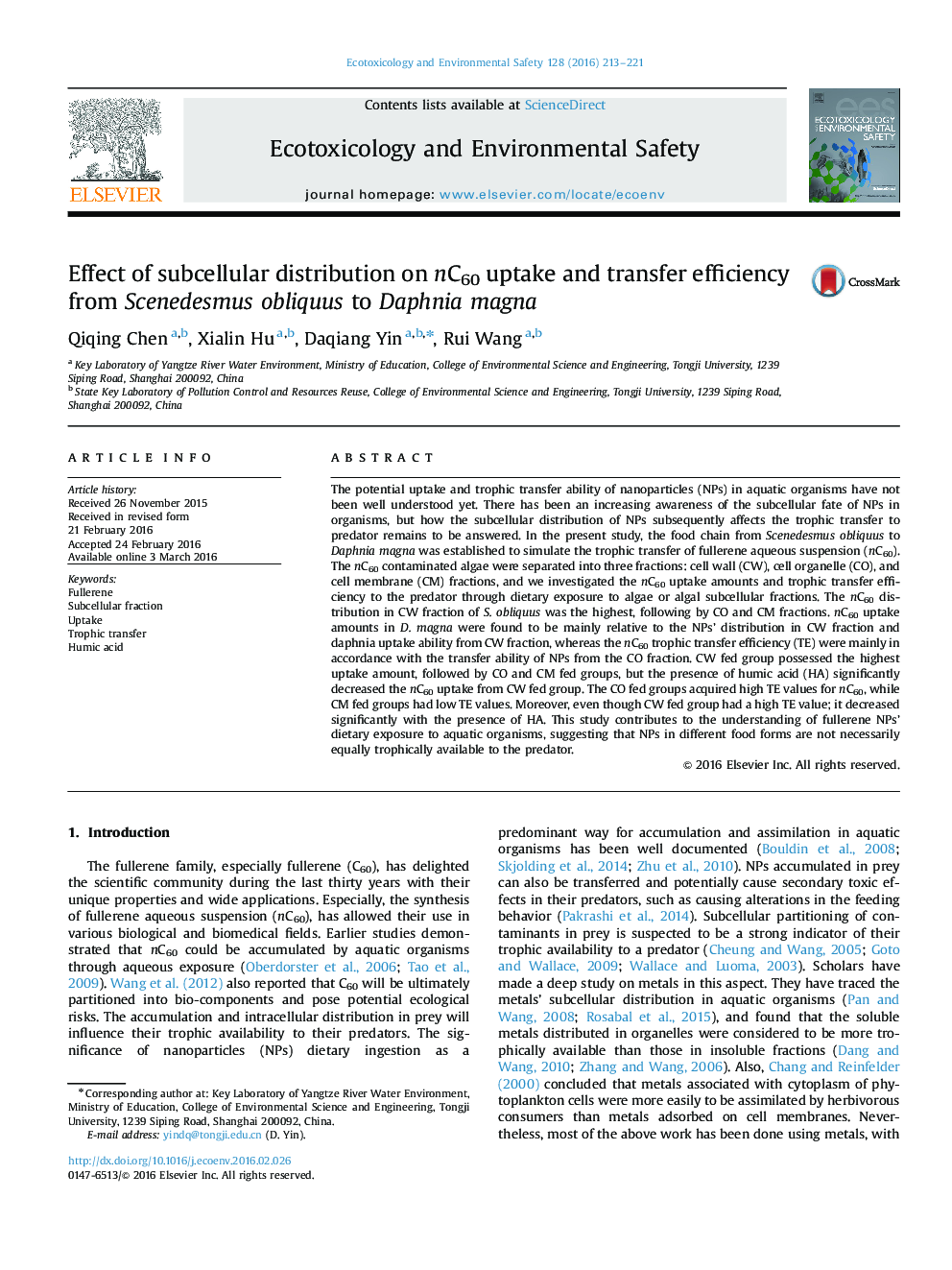| Article ID | Journal | Published Year | Pages | File Type |
|---|---|---|---|---|
| 4419351 | Ecotoxicology and Environmental Safety | 2016 | 9 Pages |
•nC60 subcellular distribution in S. obliquus follows the sequence of cell wall>cell organelle>cell membrane.•nC60 uptake amounts in D. magna were largely determined by nanoparticle uptake ability from the cell wall fraction.•nC60 transfer ability to D. magna was mainly determined by the transfer efficiency from the cell organelle fraction.
The potential uptake and trophic transfer ability of nanoparticles (NPs) in aquatic organisms have not been well understood yet. There has been an increasing awareness of the subcellular fate of NPs in organisms, but how the subcellular distribution of NPs subsequently affects the trophic transfer to predator remains to be answered. In the present study, the food chain from Scenedesmus obliquus to Daphnia magna was established to simulate the trophic transfer of fullerene aqueous suspension (nC60). The nC60 contaminated algae were separated into three fractions: cell wall (CW), cell organelle (CO), and cell membrane (CM) fractions, and we investigated the nC60 uptake amounts and trophic transfer efficiency to the predator through dietary exposure to algae or algal subcellular fractions. The nC60 distribution in CW fraction of S. obliquus was the highest, following by CO and CM fractions. nC60 uptake amounts in D. magna were found to be mainly relative to the NPs’ distribution in CW fraction and daphnia uptake ability from CW fraction, whereas the nC60 trophic transfer efficiency (TE) were mainly in accordance with the transfer ability of NPs from the CO fraction. CW fed group possessed the highest uptake amount, followed by CO and CM fed groups, but the presence of humic acid (HA) significantly decreased the nC60 uptake from CW fed group. The CO fed groups acquired high TE values for nC60, while CM fed groups had low TE values. Moreover, even though CW fed group had a high TE value; it decreased significantly with the presence of HA. This study contributes to the understanding of fullerene NPs’ dietary exposure to aquatic organisms, suggesting that NPs in different food forms are not necessarily equally trophically available to the predator.
